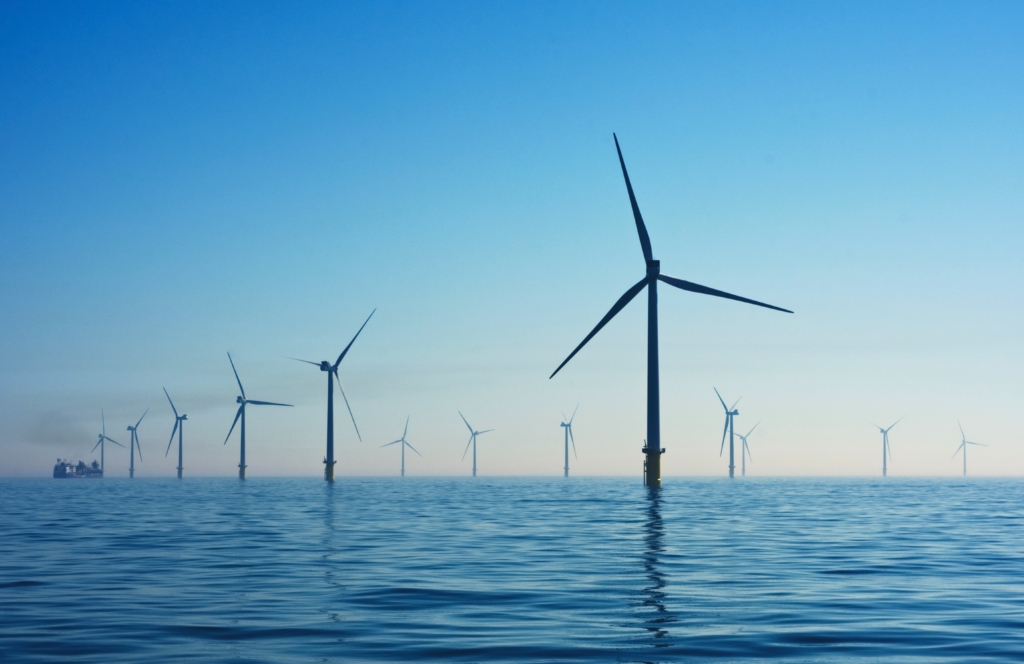 A recent ruling by the Maryland Public Service Commission (PSC) is fueling predictions that the state is about to experience a surge of investment in manufacturing and logistics facilities.
A recent ruling by the Maryland Public Service Commission (PSC) is fueling predictions that the state is about to experience a surge of investment in manufacturing and logistics facilities.
In December, the PSC awarded additional Offshore Wind Renewable Energy Credits (ORECs) to U.S. Wind and Orsted – the developers behind the planned Skipjack II and Momentum Wind projects off Maryland’s coast. The decision raises the amount of wind energy the companies can develop from the original plan of 368 megawatts to a total of 2,022 megawatts.
“That decision cemented the opportunity to grow the offshore wind industry in the state, in Baltimore and, particularly, at Tradepoint Atlantic,” said Aaron Tomarchio, Executive Vice President, Corporate Affairs at Tradepoint Atlantic. “It expanded the megawatt capacity of both Orsted and U.S. Wind, and expanded their ability to create a center of gravity for the offshore wind industry here in Maryland. It is the level of market demand we need to attract investment in manufacturing and establish ourselves as a core logistics hub for the offshore wind industry.”
The PSC decision included provisions that drive that investment. Specifically, the decision requires the offshore wind developers to create three, major manufacturing facilities in the state:
- A monopile facility to fabricate the subsea foundations for the wind turbines,
- A tower facility to create the steel towers that will hold the turbine blades, and
- An array cable facility that will manufacture the large, highly engineered power lines that will stretch between the turbines and link them to an offshore substation.
“Each of these facilities alone is a significant investment” which can range from $100 million to $250 million each, said Sam Salustro, Maryland Director of the Offshore Wind Business Network. “To have all three of them in Maryland is simply astounding.”
Because such facilities are so expensive and so rare, industry experts expect they will be used to supply offshore wind projects all along the eastern seaboard.
“In round numbers, developers are talking about creating 30 gigawatts of offshore wind by 2030. That’s about 2,000 turbines,” Salustro said. “Here in Maryland, we are going to see about 150 to 200 turbines. So despite the fact that we are a smaller part of this overall development, these facilities are not only going to build out the Maryland offshore wind facilities. They are also going to contribute to offshore wind facilities up and down the east coast.”
Consequently, those facilities will require extensive support from second-tier manufacturers, suppliers and logistics companies.
“While the major components of the offshore wind turbines will be steel, manufacturing those things will require a host of sectors – ladders, platforms, doors, lights, electrical circuits, electrical wiring, secondary steel, etc. These facilities will depend on an extensive supply chain in order to keep the factories going,” Salustro said.
Because offshore wind turbines can measure as much as 850 feet from the bottom of the foundation to the top of the tower, turbines must be assembled at dockside and then transported by sea. Consequently, further logistics support is required to transport components which are not manufactured in Maryland, and marshal all materials at the assembly site. Offshore wind developers have already committed to multi-million dollar dockside improvements at Tradepoint Atlantic to support such operations.
“We have two partners, U.S. Wind and Orsted, that are in conversations with us about siting significant supply chain and manufacturing operations here at Tradepoint, including fabrication of monopiles and steel cable manufacturing,” Tomarchio said.
Orsted and U.S. Wind are aiming to complete their Maryland wind farms by 2026. Consequently, construction of manufacturing and logistics support facilities could begin within a year.